ASUS STRIX X99 Gaming Broadwell-E Motherboard Review
John Williamson / 8 years ago
Software Overview
ASUS’ GameFirst software monitors network traffic but more importantly, offers packet optimisation. Additionally, the end-user is able to prioritise bandwidth for certain programs and even block applications from accessing your network. In theory, the software can reduce network latency.
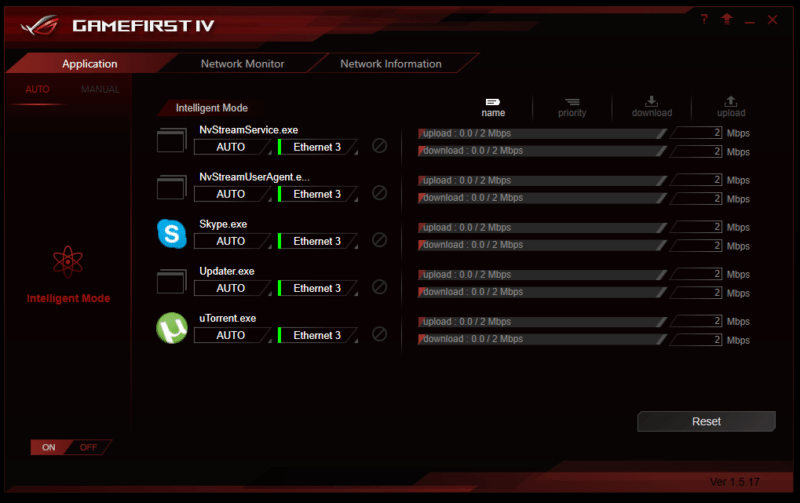
The ASUS Boot Setting is a handy addition and once enabled restarts directly into the BIOS via a single click. This means you no longer have to hammer the delete key to enter the BIOS which can be tricky when using ultra-fast NVMe storage devices.

HyStream is an interesting utility which mirrors your display from an Android or iOS device onto your PC’s monitor. I’m not entirely convinced by the usefulness of this application but it might be required by some users who regularly complete work on mobile operating systems.

The ASUS PC Diagnostics lists essential information about your PC and has an integrated stress test to ensure everything is working as intended.

There’s an absolutely staggering amount of options in ASUS’ AI Suite 3 software package to customise almost every aspect of your system. The main page allows you to select a pre-configured power profile, instigate 5-way Optimisation for easy overclocking and monitor key variables.
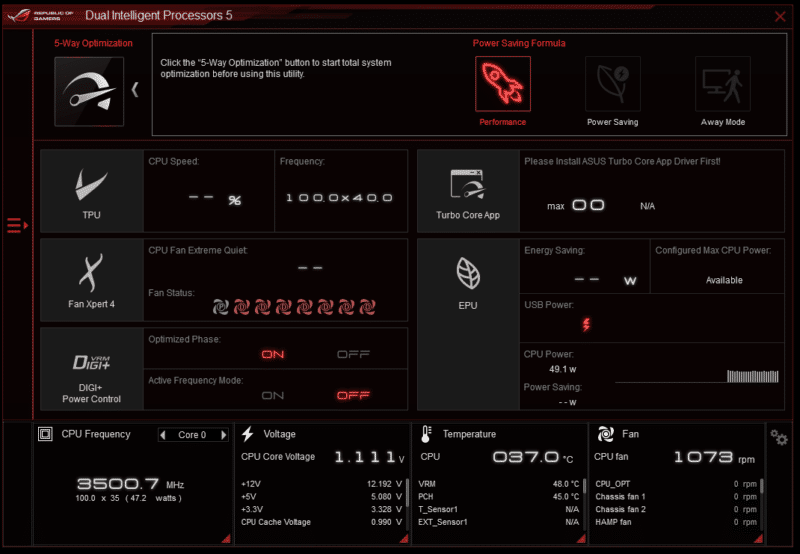
You can even adjust the BCLK, cache ratio and core voltage within Windows using a visually friendly user-interface.
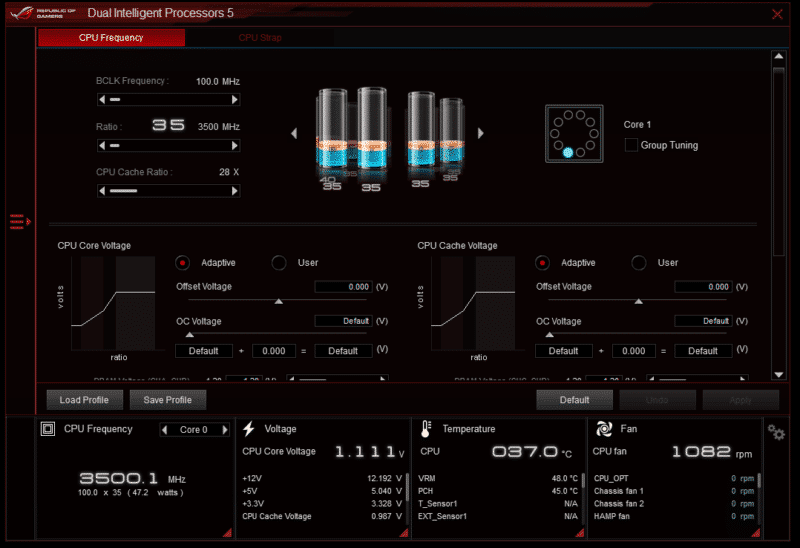
In a similar fashion, it’s possible to set up custom fan curves, choose a default preset and customise your system to balance performance requirements with noise output.
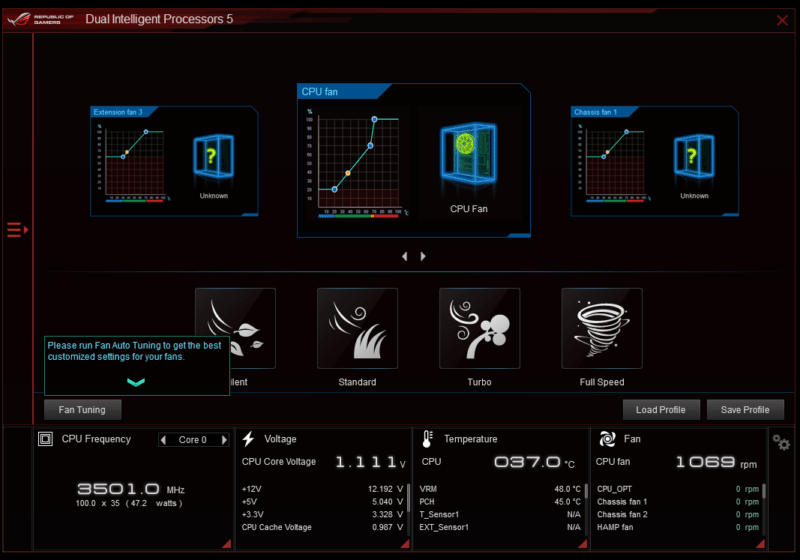
Advanced users might choose to adjust the power phase control or select an increased load-line calibration.
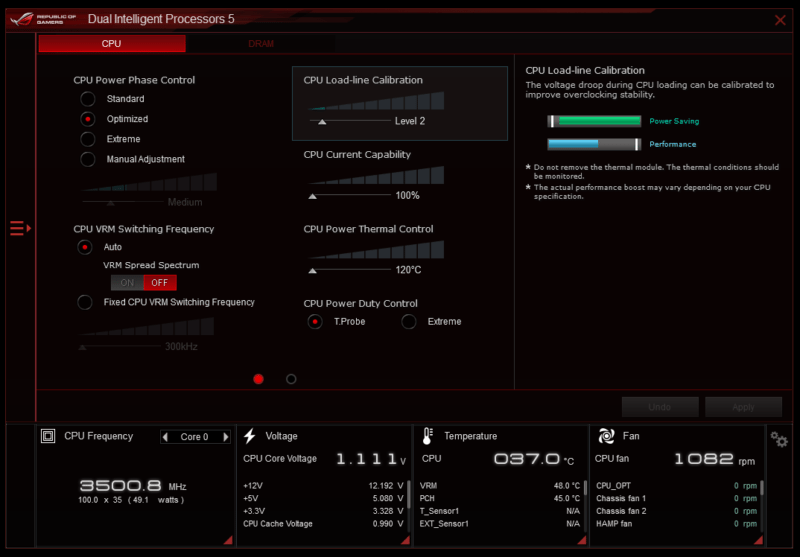
One of the most useful applications is the PC cleaner which scans for duplicate files, junk folders and other files which could cause compatibility problems before deleting them to free up hard drive space.
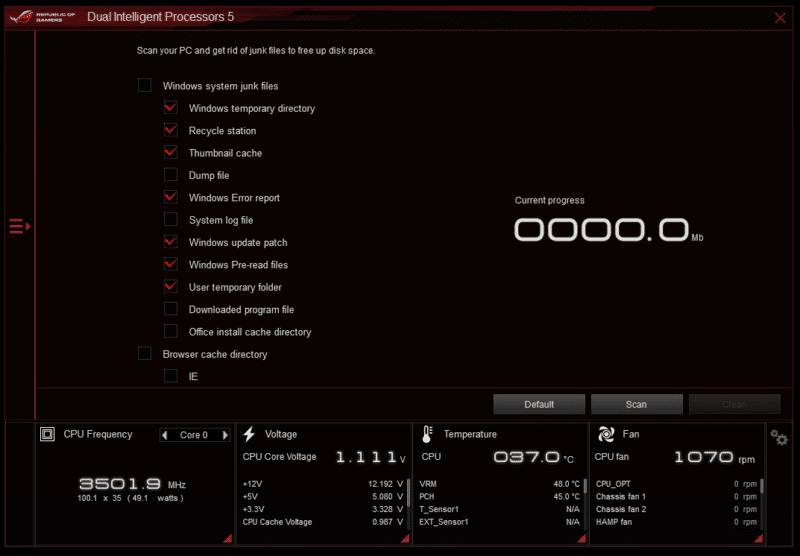
Here we can see the full list of applications included in ASUS’ AI Suite 3:
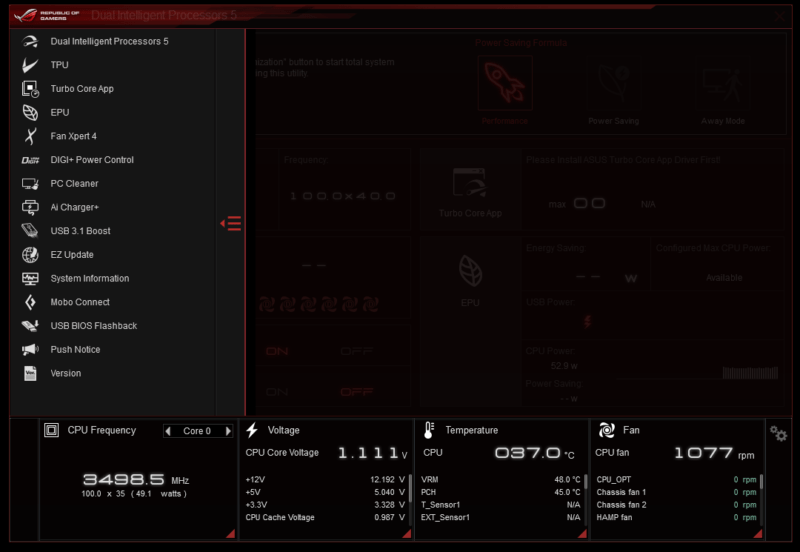
The Aura software is crammed packed with settings which means you can alter the colour, choose from various effects, change which sections are illuminated and much more! Also, there’s the ability to make the integrated RGB strips cycle through certain colours based on the CPU temperature or synchronise them to a music track. It’s even possible to attach an LED strip directly to the motherboard and control its colour output. While it’s not quite as detailed as something like the NZXT Hue+, the scope of customization is superb and worth checking out.

Next up is the RAMCache application which utilises spare system memory to form an incredibly responsive RAM disk. This can reduce loading times and prolong the lifespan of your SSDs.




















